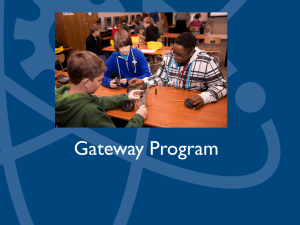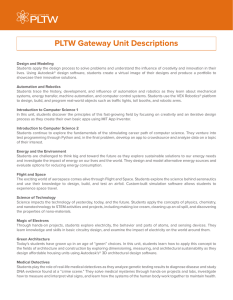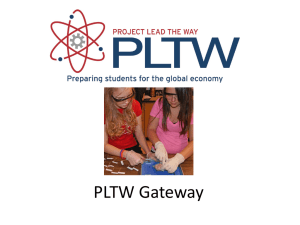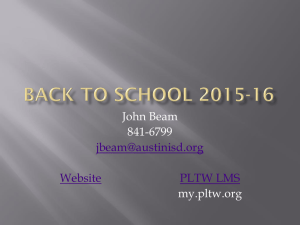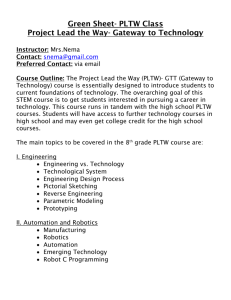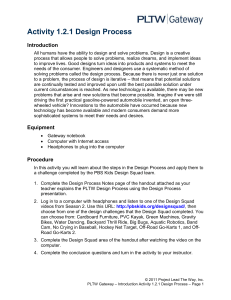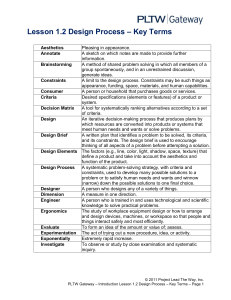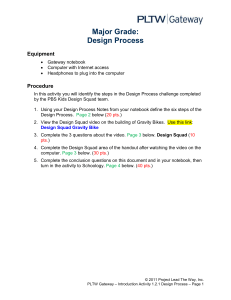PLTW Gateway - Curriculum
advertisement
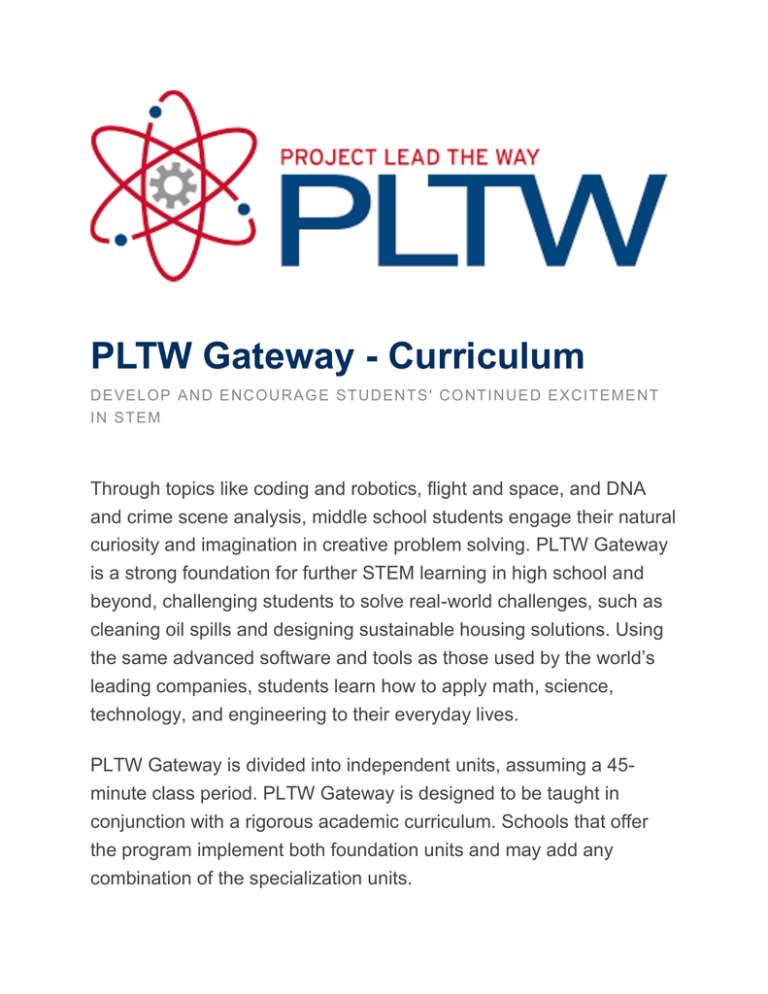
PLTW Gateway - Curriculum DE V E L OP A ND E NCO URA G E ST UDENT S ' CO NT I NUE D E XCI T E ME NT I N S TE M Through topics like coding and robotics, flight and space, and DNA and crime scene analysis, middle school students engage their natural curiosity and imagination in creative problem solving. PLTW Gateway is a strong foundation for further STEM learning in high school and beyond, challenging students to solve real-world challenges, such as cleaning oil spills and designing sustainable housing solutions. Using the same advanced software and tools as those used by the world’s leading companies, students learn how to apply math, science, technology, and engineering to their everyday lives. PLTW Gateway is divided into independent units, assuming a 45minute class period. PLTW Gateway is designed to be taught in conjunction with a rigorous academic curriculum. Schools that offer the program implement both foundation units and may add any combination of the specialization units. Foundation Units Design & Modeling Students apply the design process to solve problems and understand the influence of creativity and innovation in their lives. They work in teams to design a playground and furniture, capturing research and ideas in their engineering notebooks. Using Autodesk® design software, students create a virtual image of their designs and produce a portfolio to showcase their innovative solutions. Automation & Robotics Students trace the history, development, and influence of automation and robotics as they learn about mechanical systems, energy transfer, machine automation, and computer control systems. Students use the VEX Robotics® platform to design, build, and program real-world objects such as traffic lights, toll booths, and robotic arms. Specialization Units Introduction to Computer Science 1 Studies show that by 2018, 1.4 million job openings will be available for computer specialists. In this unit, students discover the principles of this fast-growing field by focusing on creativity and an iterative design process as they create their own basic apps using MIT App Inventor. Introduction to Computer Science 2 Students continue to explore the fundamentals of the stimulating career path of computer science. They venture into text programming through Python and, in the final problem, develop an app to crowdsource and analyze data on a topic of their interest. Green Architecture Today’s students have grown up in an age of “green” choices. In this unit, students learn how to apply this concept to the fields of architecture and construction by exploring dimensioning, measuring, and architectural sustainability as they design affordable housing units using Autodesk’s® 3D architectural design software. Medical Detectives Students play the role of real-life medical detectives as they analyze genetic testing results to diagnose disease and study DNA evidence found at a “crime scene.” They solve medical mysteries through hands-on projects and labs, investigate how to measure and interpret vital signs, and learn how the systems of the human body work together to maintain health.
